What is the best workout to strengthen core stability? Our forum members have detailed why they think core training is important, who can benefit, exercises, sample training programs and more. Try them out now!
![]()
TOPIC: What Is The Best Workout To Strengthen Core Stability?
![]()
The Question:
Strong core muscles are a standard “must have” for a great athlete’s physique. There are different ways and concepts of training the core muscles; but which is the best?
What is the best workout to strengthen core stability? Be specific.
What are the benefits of strengthening core stability?
Who would be interested in strengthening their core stability?
Bonus Question: Have you ever used this type of workout before? If so, how were the results?
Show off your knowledge to the world!
The Winners:
Prizes:
1st place – 75 in store credit.
2nd place – 50 in store credit.
To use your credit, e-mail Will @ will@bodybuilding.com for more info.
![]()
1st Place – ho_124
View This Author’s BodySpace Here.
![]()
![]()
Introduction
![]()
Core stability is an important attribute of the body that is vital to an array of athletes. This is an aspect that keeps the body in equilibrium during certain types of movements. For example, it’s core stability that allows a wrestler to throw an opponent in a fluid motion.
Of equal significance is the fact that core stability is a preventative measure against injury in the lower spinal region. Think again of that wrestler. What keeps the musculoskeletal system (relating to the muscles, bones, joints, ligaments, tendons and spinal discs) of his/her core system from failure leading to injury? The obvious answer is core stability.
| RELATED ARTICLE |
![]() |
What Is Core Stability?
The purpose of this article is to provide insight into what core stability actually is and how it can impact your training.
[ Click here to learn more. ] |
|
First of all what is the core for those who don’t know? It is the lower torso region including the abdominals, obliques and lower back. This is involved in facilitating a wide variety of movements, such as jumping, twisting, etc. It is also important as a power source for many actions. For example the power from a punch or kick comes not from the arm or leg, but from the core.
Lets define stability:
Stability is defined as remaining unchanged even in the presence of forces that would normally change the state or condition (http://www.bodybuilding.com/fun/inmag25.htm). Since this is the definition of stability, just apply this to the core region and there you have it, core stability.
![kick]()
![Enlarge]()
Click Image To Enlarge.
The Power From A
Kick Comes From The Core.
Proper stability of the core allows athletes to withstand forces that have the ability to be debilitating. It is also involved in coordination of simple and complex movements that result in optimal performance.
Seeing as how core stability can influence an athletes performance, let’s see how this characteristic can be improved and developed.
![]()
Workout
What Is The Best Workout To Strengthen Core Stability? Be Specific.
![]()
Before we get into a workout, I want you to understand how core stability can be improved. One misconception I would like to clear is that of core strength and its relation to stability. It is erroneous to think of strong core muscles as ones that can provide maximal stability.
Just because you can push out twelve decline crunches while holding a hundred pounds doesn’t mean your core stability is on the same level. What do I mean by this? Well think of a powerlifter. They are the strongest people on the face of the Earth, that’s their main skill. Now try putting them on thin poles and see if they can do the job.
“Just Because They Have The Strongest Legs,
Doesn’t Mean They Are Capable Of The Greatest Stability.”
My instant instinct would be that if they would fail miserably. That’s right, just because they have the strongest legs, doesn’t mean they are capable of the greatest stability. This isn’t to say muscular strength doesn’t help, it’s just that it isn’t the main factor.
So how do we go about working on core stability? Well there are three general ways.
![]()
1. In The Gym:
![]()
You will probably make the greatest gains on your core stability in the gym. Doing certain exercises can help coordinate your muscles to work together so certain movements can be done in a smoother fashion. Also working on core strength does help stability to some extent.
For example the stronger your muscles are the more forces it can resist, and because of this your risk of injury is reduced. Remember in the definition? Stability is defined as the ability to remain unchanged despite the forces applied upon a certain region.
Injury Prevention:
Not only is your risk of injury reduced but during specific movements you can maintain homeostasis of the body, and more particularly the core. I.e. the stronger your muscles are, the better it is at keeping the body in a balanced state during activity such as squats or the power clean. Someone who has weak core stability might be off balance or even buckle under the weight.
![]() |
![]() |
Homeostasis
Homeostasis is the property of either an open system or a closed system, especially a living organism, which regulates its internal environment so as to maintain a stable, constant condition. Multiple dynamic equilibrium adjustments and regulation mechanisms make homeostasis possible. The concept was created by Claude Bernard, often considered as the father of physiology, and published in 1865. The term was coined in 1932 by Walter Bradford Cannon from the Greek homoios (same, like, resembling) and stasis (to stand, posture). |
![]() |
![]() |
![]()
2. Training In Your Sport:
![]()
If you’re training for a specific sport, this can help improve your core stability as well as core stability RELATED to the sport. Core stability and core stability in relation to your sport are different in a way but still connected.
Take for example a wrestler. Just because he has good core stability doesn’t mean he can perform a perfect suplex throw without even trying it before. His core needs time to adjust to the movement and develop the coordination to perform it.
![Wrestle]()
![Enlarge]()
Click Image To Enlarge.
A Wrestler Needs To Develop
Coordination To Perform Moves.
But say the wrestler practices the suplex ’till he can execute it proficiently. Do you think he will be able to do gymnastics at the same level. No. Why? As I said before he has developed stability RELATED to his sport.
![]()
3. Off Court Training:
![]()
This refers to training done outside of your sport, or if your not in a sport training done outside the gym. This can be cardio, plyometrics, speed work, agility drills etc. For example certain plyometrics such as the jump lunge requires a stable core so that you don’t shift off balance.
Agility drills in which your changing directions, accelerating and decelerating at high speeds demands core stability to keep the body moving and transitioning smoothly.
![Jump Lunge]()
![Jump Lunge]()
![Enlarge]()
Click Image To Enlarge.
Jump Lunges Require A Stable Core.
If you’re uncertain which drills to choose, just take a general look at it. And if it involves an ample amount of movement, for example jumping, shifting position and direction, accelerating, decelerating or just moving your lower torso region in general, then it’s safe to say the drill works on your core stability. Stationary things like riding the bike aren’t going to do much for your core stability.
![]()
![-/>“/><strong>Crucial Points:</strong><br /><img src=]()
Taking a step back you might be confused. So let me just summarize the crucial points that are essential to your workout.
1. Strength Of Your Muscle:
This is definitely related to core stability but not the MAIN contributor. As I stated before, strong muscles support bones, ligaments, joints, etc. in place against outside forces. A strong core also helps with keeping the body in balance during certain movements.
2. Stability Defined:
Remember, stability is the ability to remain at homeostasis under forces that are trying to promote a change. The more balanced, and coordinated your muscles are, the less likely the will be injured because of a certain pressure or force. They will also aid in movements, simple or complex because of the fact that your core muscles can work in synch with each other.
For example a professional gymnast’s core muscles will contract and relax in perfect timing to deliver swift, skilled movements. A beginner gymnast’s core muscles will be contracting and relaxing out of synch because the coordination has not been trained enough yet, thereby causing jerky amateur movements.
3. Ways Of Training Core Stability:
Very briefly in the gym, during your sport or outside of the gym or sport. These are all connected to each other but not exactly the same. Just because you have a very stable core while wrestling doesn’t mean your core will be stable during certain plyometric drills.
![]()
Workout
![]()
Now that you’ve got a good idea of what core stability is and how to improve it, its time for the workout. Keep in mind I’m writing this for the average weight lifter looking for some core stability. Therefore if it doesn’t suit your needs, i.e. the rep range, sets, workout frequency, exercise, then feel free to tweak it according to your preference.
“Workouts That Focus On Core
Stability Can Also Promote Strength And Size.”
Keep in mind, don’t treat this as a “separate workout.” This can also count as your core workout (abdominals and lower back). So if you already got your workout program going, just integrate it into the regimen. Workouts that focus on core stability can also promote strength and size if that’s what your looking for. So basic idea, don’t treat core stability workouts as some special, separate, training program.
- Frequency – Once per week, the norm for most weight lifting programs.
- Repetition Range – 6-12 the norm for most bodybuilding programs and even those for athletes.
-
- Sets – 12 total for one workout.
- Duration – 30-45 minutes, shorter workouts are best since you can focus your intensity in a shorter amount of time giving you a better workout.
- Intensity – High intensity. Your intensity should be such that you fail or are close to it on most of your sets. If you’re a beginner take it easy please, I don’t want anyone hurting themselves.
I’ll provide 2x workouts. You should switch up your workouts every 1-2 months to prevent your body from going into a plateau and adapting to the exercises. Final note, on these workouts you will need an exercise/Swiss ball.
![arrow]() View Exercise Balls Sorted By Top Seller Here.
View Exercise Balls Sorted By Top Seller Here.![]()
![-/>“/><strong>Workout 1</strong><br /><img src=]()
Abdominal Workout:
-
Swiss Ball Sit Ups or Crunches – 3 sets x 6-12 reps
Basically sit ups or crunches on a Swiss ball. Sit ups are harder. If this is too easy add weight and hold it at your chest. Plates would be ideal. Here is the starting position. This works your upper abdominals.
-
Exercise Ball Pull-In – 3 sets x 6-12 reps
Start with your shins on the Swiss ball and hands on floor in front of you. Roll the ball behind you by extending your legs and then back inward. This is one repetition. If this is too easy, do it with your toes intend of your shins on the ball in the starting position. If doing it with your toes is too easy try one leg, then switch. Here is the starting position. Works your lower abdominals.
-
Seated Leg Tucks – Oblique version – 3 sets x 6-12 reps
To do the oblique version sit on one cheek of your butt so your body is angled to the side. I prefer to do them on the floor and with my legs further out to make it harder rather than in the picture. Also if you really want to make it work on core stability, do it without the help of your hands.
You can also put a weight between your feet or put some ankle weights on. Carrying a plate on your chest is another option but this requires crazy strength and stability. Here is the starting position but remember to target obliques sit on one cheek and angle your body sideways so your obliques faces up toward the ceiling rather than towards the side. It works your obliques.
Lower Back Workout:
-
Deadlifts 3 sets x 6-12 reps
The thing here is you might want to try and incorporate your lower back workouts with your legs instead of with your abdominals if your planning on doing deadlifts. Its perfectly fine and acceptable
-
Back extensions 3 sets x 6-12 reps
If doing it without weight is too easy, add some. Again plates here are the best option.
![]()
![-/>“/><strong>Workout 2:</strong><br /><img src=]()
Abdominal Workout:
-
Ab roller – 3 sets x 6-12 reps
If you’ve ever tried this it’s really tough to keep stable. Try to find a ab roller with a wider grip. The wider the grip the harder it is. Do it on your knees if you cant handle on your feet. Works your upper and lower abdominals.
-
Swiss Ball Leg Pull-In – 3 sets x 6-12 reps
Like flat bench leg pull in except on an exercise ball making it significantly harder. If you cant do it get someone to hold the ball for you. If it’s too easy don’t use your hands. If that’s still too easy add weight between your feet or ankle weights. That should be plenty. This works your lower abdominals.
-
Plate Twist – 3 sets x 8-12 reps
At first if your not used to it, use a low weight to get balanced. As you get better move the weight up. Works the obliques.
Lower Back Workout:
-
Deadlift variation – 3 sets x 8-12 reps
Choose a variation other than the traditional deadlift, such as stiff-legged deadlifts etc. Again, I prefer to do my lower back workouts with legs when I do deadlifts since deadlifts incorporates the leg muscles.
![]()
![-/>“/><strong>Tweaking The Workout To Suit Your Needs:</strong><br /><img src=]()
Of course the workouts I listed above won’t be perfect for everyone. For example someone looking for endurance of core stability might want to use a higher rep range. Also someone who likes doing more sets should feel free to do so. You might be thinking, I’m in a certain sport and I don’t know how to tweak the program for my sport. Well here’s what you can do.
Take a look at your sport and decide if it fits into these three categories. Largely aerobic, largely anaerobic or requiring both. For example sprinting is anaerobic since it utilizes the fast twitch muscle fibers (IA).
Largely aerobic means requiring the use of the slow-twitch muscle fibers (II) and is more endurance oriented like marathon
running
. In-between is sports that require both fast and slow twitch muscle fibers like
hockey
,
football
,
wrestling
etc.
Now if your sport is largely anaerobic you choose a lower repetition range to target the fast twitch muscle fibers, 4-8 is a good range. If your sport is largely aerobic choose a higher rep range of 20-plus depending on how endurance oriented it is. If it’s in-between stick with 6-12 repetitions.
| RELATED ARTICLE |
![]() |
Off Season Hockey Training!
Here is a list of hockey-specific exercises to prepare you for the upcoming hockey season! Printable workout logs included!
[ Click here to learn more. ] |
|
Of course this guideline is just that, a guideline. There are other things to take into consideration but would take too long if I went into detail about every sport. Also I don’t know everything about every single sport so consult your coach,
personal trainer
, or strength and conditioning coach to discuss how you should be doing your core stability workouts.
![]()
![-/>“/><strong>Incorporating Core Stability Into Off Court/Out Of Gym Training:</strong><br /><img src=]()
Incorporating core stability training into your cardio, plyometrics, speed/agility training can be done by simply switching up your exercises. I will give some general sample workouts on how to do this. Of course you should again tweak it to suit your own needs or consult your strength and conditioning coach to see if it is right for you.
Plyometric Workout Incorporating Core Stability:
- Rest 1-2 minutes and repeat 3-4 times.
-
![print]() Click Here For A Printable Log Of Thsi Workout.
Click Here For A Printable Log Of Thsi Workout.
Frequency – Frequency should be 2-3 times per week
Intensity – Intensity should be high. On a scale of 1-10 it should be 8-9.
Notes: These exercises were chosen because they incorporate a lot of core support to execute them. Therefore core stability is also improved upon.
![]()
![-/>“/><strong>Speed/Agility Workout Incorporating Core Stability:</strong><br /><img src=]()
| RELATED PRODUCT |
![Agility Ladder]() |
Amber Sports Presents:
Agility Ladder
Improve Footwork And Agility For Any Sport!
[ Click here to learn more. ] |
|
![print]() Click Here For A Printable Log Of This Workout.
Click Here For A Printable Log Of This Workout.
Frequency – Frequency is 2-3 times per week
Intensity – Very high intensity. On a scale of 1-10 it should be 9-9.5 or even 10 on a few.
Notes: You might be thinking, how does sprinting and agility drills work on my core stability. Note that sprinting and changing direction in agility drills requires smooth movement from the core muscles thereby requiring core stability. Therefore by doing these exercises you work on core stability.
![]()
![-/>“/><strong>Cardio Workout Incorporating Core Stability:</strong><br /><img src=]()
The cardio I choose to incorporate core stability with is HIIT (High intensity interval training) cardio. This is done by most bodybuilders and weight lifters to spare muscle breakdown since it is short duration but high intensity.
| RELATED ARTICLE |
![]() |
Cardiovascular HIIT!
With High Intensity Interval Training you can burn more fat while spending less time in the gym. I will explain how you can get the best results from this new type of cardiovascular training.
[ Click here to learn more. ] |
|
To do this, choose 5 exercises that incorporate core stability. For our purposes I choose burpee’s, sprints, jump lunges, skipping and box jumps. These are some of the same exercises used from above, but notice how they are used in a different way to make it HIIT cardio.
First you select an exercise say burpees. You do that for 30 seconds as fast as you can, then break into a light jog for 60 seconds. Next you do sprints as fast as you can for 30 seconds then another 60 second jog.
You continue down the list of 5 exercises and repeat one more time. This means 10x 30 second high intensity sessions coupled with 10 x 60 second low intensity jogs for a total of 15 minutes. Since your going at a very high intensity it should be very tiring at the end.
Traditionally it’s only done with 1 exercise throughout, but I chose to do 5 different ones to work on core stability to an even greater extent. So this is how it looks:
Exercise 1
: Tuck Jumps 30 seconds
60 second light jog
Exercise 2
: Sprints 30 seconds
60 second light jog
Exercise 3
: Bounds 30 seconds
60 second light jog
Exercise 4
: Skipping 30 seconds
60 second light jog
Exercise 5
: Box jumps 30 seconds
60 second light jog
Repeat ONE MORE TIME for a total of 15 minutes. NO BREAKS INBETWEEN
![print]() Click Here For A Printable Log Of This Workout.
Click Here For A Printable Log Of This Workout.
Frequency – 2-5 times per week
Intensity – Maximal intensity on the 30-second intervals. Light intensity on the 60-second jogs.
Notes: Exercises chosen again work on your core stability.
NOTE FOR ALL PROGRAMS: You should switch up the exercises every 1-2 months so you don’t get bored with it and so you don’t plateau. If you keep with the same workout too long your body can adapt to the exercises and your progress starts decreasing.
![]()
Benefits
What Are The Benefits Of Strengthening Core Stability?
![]()
![]()
1. Increased Strength:
![]()
Increased strength as a result of core stability workouts is one of the main benefits. With this comes the decrease in the risk of injury since stronger muscles are less prone to jarring and failure to external forces.
![]()
2. Increased Coordination:
![]()
Increased coordination is another great benefit you achieve. This coordination allows you to perform movements with greater ease and fluidity. As your muscles learn to work in synch with each other, your actions become more efficient.
![]()
3. Increased Stability/Balance:
![]()
Increased stability and balance are an important attribute you gain from doing these types of workouts. This helps a great deal if your into sports since you will be better able to keep your body in a homeostatic position. For example a football player with good stability/balance is better able to keep on his feet when being pushed against than a running back with poor balance/stability.
![]()
![+]()
Click To Enlarge.
The Football Player With Good Stability/Balance
Is Better Able To Keep On His Feet.
![]()
4. Decreased Chance Of Injury:
![]()
I don’t know how many times I’ve mentioned this but a stable core is one that supports injury prevention. Imagine a running back being smoked by a linebacker. What supports his bones, joints, and ligaments in his core? It’s a stable, steady, balanced core that is resistant to the forces put upon it.
![]()
5. Increased Performance:
![]()
Again I don’t even know how many times I’ve said it but a stable core increases your performance because your able to keep your balance through certain movements.
Think of a professional and amateur badminton player. The professional will move with grace and ease around the court, looking balanced in all aspects. However the beginner will sometimes be stumbling around and fidgeting to the shuttle.
| FORUM THREAD |
![]() |
Is Badminton A Good Cardio Workout?
I’m starting to play more often now so I was wondering if this was a good cardio workout, usually about an hour-an hour and a half, with 5 minute’s rest between each match. By the end of the match my shirt is completely soaked. Usually the matches are singles so it’s tougher and more tiring. Anyone think this is a pretty good cardio workout? – bulkingup79.
[ Click here to learn more. ] |
|
The professional player has developed a good stable core so he can move like that. However the beginner is just beginning to train his core to coordinate like the professional’s, hence the reason for his unskilled court movement.
![]()
Interest
Who Would Be Interested In Strengthening Their Core Stability?
![]()
Athletes that require lots of core movement and strength should definitely consider strengthening their core stability. This will help with their performance and to execute their movements with greater ease.
First of all you have to decide how important core stability is to your sport. Usually high intensity sports such as MMA, wrestling, football, hockey, track and field etc require large amounts of core stability as well as strength.
| RELATED ARTICLE |
![]() |
Core Training For MMA!
Core training is one of the most important training requirements of benefit to athletes and non-athletes. Benefits and sample training workouts of core training for MMA fighters any average person follow.
[ Click here to learn more. ] |
|
Sports such as marathon running and long distance biking require less core stability, but it is a good thing to have since they need a bit of it over a long period of time.
Weight lifters, bodybuilders etc should also consider strengthening their core stability. Why? If all your doing is weight lifting you still need it believe it or not.
![Deadlift]()
![Enlarge]()
Click Image To Enlarge.
Weight Lifters Should Also
Strengthen Their Core Stability.
When doing heavy exercises like deadlifts and squats, you need a steady, strong, and stable core to support the weight. Without it, your spine would buckle under the pressure causing injury. Also if your doing things like clean and presses, power cleans it is even more important. All that jerking requires your core be coordinated and balanced to ensure you don’t injure yourself and everything lifts smoothly.
![]()
Bonus Question:
Have You Ever Used This Type Of Workout Before? If So, How Were The Results?
![]()
In the past I played badminton which does require core stability. All the lunging, jumping, running to a shot etc. required a stable core to be able to perform smoothly. I did workouts similar to the one listed above and also my cardio, plyometrics and speed training did resemble the ones listed above.
The results were great. Not only was I stronger, faster and had greater endurance but I also had a lot more balance, and I could feel my self moving with greater efficiency. Also I never had any major injuries which I attribute to my core stability as well as strength.
References:
- http://www.brianmac.co.uk/corestabex.htm
- www.bodybuilding.com/fun/inmag25.htm
- www.bodybuilding.com/fun/inmag29.htm
![]()
2nd Place – Blink41
View This Author’s BodySpace Here.
![]()
![]()
Introduction
![]()
The core muscles lie deep in the upper body. They are usually attached to the spine, pelvis and the muscles that support the shoulder blade. When the core muscles contract, they create a solid base of support for the body.
| RELATED ARTICLE |
![]() |
Back In Balance!
Alwyn Wong, a chiropractor specializing in weight training injury, shares his secrets on developing a well balanced core. Developing these muscles will help you stay out of his office.
[ Click here to learn more. ] |
|
Without a solid core, your lifts will suffer and you will not perform to your full potential. Training the core muscles will also correct posture imbalances that can potentially injure an athlete. In this article, I will show you how you can strengthen your core muscles as well as the many benefits you will enjoy.
![]()
Workout
What Is The Best Workout To Strengthen Core Stability? Be Specific.
![]()
Training the core muscles is easy. Why? The core muscles are worked by many exercises, including any variation of the squat, deadlift, military press, bench press and many other common exercises. A strong core provides support for your spine so you walk, jog, run, lift and much more. A weak core will lead to bad posture, lower back pain and ultimately injury.
![Banch]()
![Enlarge]()
Click Image To Enlarge.
The Bench Press Works The Core Muscles.
The core muscles, such as the abdominals and back, aids in almost every exercise. However, there are exercises to isolate the core muscles and train them individually. Here are some of the best exercises to train and strengthen the core:
![]()
![-/>“/><strong>The Bridge:</strong><br /><img src=]()
To do this exercise, first lie on your back with yours knees bent up. Do not arch your back; just keep it natural and relaxed. Contract your abdominal muscles and hold that contraction. While contracting that muscle, raise your hips off the floor. Hold that position for about five seconds and then gradually move on to about eight seconds as you begin to master this exercise.
Do not hold your breath as it is important that you breathe throughout the exercise. The bridge is a great exercise to strengthen many of the core muscles.
![]()
![-/>“/><strong>Leg Rotation:</strong><br /><img src=]()
This exercise will really strengthen your abdominals as well as your oblique. To perform this exercise, lie flat on your back with your back neutral and relaxed. Contract the abdominal muscles and hold the contraction. Keep your hands and shoulders flat on the floor. Let your knees fall slowly to the left until you feel a nice stretch. They do not need to touch the floor.
If you feel pain, then you went too far down. After you feel that stretch, rotate your legs to the other side using your abdominals and oblique. Perform about 8-12 reps for this exercise to really strengthen your core muscles. As you get more experienced with this exercise, attach some ankle weights to your ankles and perform this exercise.
![]()
![-/>“/><strong>The Crunch:</strong><br /><img src=]()
Almost everybody in America knows how to perform the crunch. However, proper form is essential for this exercise. If you can do 100-or-200 repetitions of the crunch, then you are not performing this exercise correctly.
To correctly perform this exercise, lie flat on your back. Keep your back neutral and put your hands behind the back of your head. Raise and bend your legs to a ninety degree angle. Using your abdominal muscles, touch your knees with your elbows. Do not use your arms to assist you in this exercise, strictly use only your abdominals.
At the top of the movement, hold the contraction for at least five seconds. When it comes to crunches, it is definitely quality reps over quantities reps.
| RELATED ARTICLE |
![]() |
Ab-solutely Excellent Crunches!
Here I will discuss what the abdominal group is, the common pitfalls, and some strength training exercises for that area of the body.
[ Click here to learn more. ] |
|
![]()
![-/>“/><strong>The Plank:</strong><br /><img src=]()
The Plank is one of my favorite exercises. To perform this exercise, lie on your stomach. Raise yourself up so you are resting on your knees and forearms. Keep your back and head as straight and in line as possible.
A good way to think about it is to pretend that your back is a tabletop. Squeeze and contract your core muscles by pulling your elbows toward your knees. However, neither the elbows nor knees should move from their positions. Hold the position for approximately five seconds. As you get stronger at this exercise, move on to about eight seconds.
![]()
![-/>“/><strong>V Sit Up Hold:</strong><br /><img src=]()
This is exercise is effective at targeting the abdominals. Before you begin this exercise, it would be a good idea to first make sure that your form for the crunch is exceptional. It is a simple exercise to perform really.
First, lie flat on your back with back neutral. Fold your waist by lifting your legs off the ground while simultaneously extending your arms in the air to touch your toes. You should look like the letter V when viewed from your side. Hold this position as long as you can. This exercise should also improve your balance.
![]()
Benefits
What Are The Benefits Of Strengthening Core Stability?
![]()
Before I discuss how a strong core can benefit you, I would first like to discuss how a weak core can hurt you. Weak core muscles can lead to numerous injuries, some more serious than others. The most common injury associated with weak core muscles tends to be lower back pain.
The most common reason for lower back pain is caused by having bad posture. Weak core muscles can also hurt you lifts in the gym because your body is not properly supported. If you are not stabilized during a lift, your form will start to slip and you will injure yourself.
For all you visual people out there, pretend that your spine is a stack of empty soda cans, each one stacked on top of the other. If you do not have strong core muscles, your spine (soda cans) will be wrapped in Scotch tape. Now if you have strengthened your core muscles, that Scotch tape will become tighter and more tensed, sort of like the bandages athletes use to wrap injured ankles. A strong core will increase the support in your spine by helping it handle the forces of rotation and compression that lead to back injuries.
| RELATED ARTICLE |
![]() |
Prevent Back & Neck Pain!
This article will primarily address back injury prevention for fitness enthusiasts. Personal experience has shown me that back pain can literally cripple one’s efforts in the gym.
[ Click here to learn more. ] |
|
Most people do not know this, but a strong core will promote healthy normal bowel movements. How? Well, the pelvis muscles are part of the core. Therefore, a strong and healthy core will lead to a strong and healthy pelvis. For those who don’t already know, the pelvis muscles eliminate waste from our body by contractions. If you have a weak core, your pelvis may not contract properly.
Your core muscles also play a great part in your sports performance. Take for instance baseball. When a batter swings the bat, the power behind his swing starts from the legs. The power than transfer up through his abdominals/back (The core muscles) and to his arms for the swing. Now think of how his swing would be affected if he had a weak core. The power from his legs would not have transferred to his arms and his swing would have been weaker.
![Baseball]()
![Enlarge]()
Click Image To Enlarge.
Your Core Muscles Play
A Great Part In Sports Performance.
![]()
Interest
Who Would Be Interested In Strengthening Their Core Stability?
![]()
So who would benefit from core stability and core strength? Well, athletes from tennis to bodybuilders and power lifters to baseball players will benefit tremendously from core training. Besides athletes, just about every single person on Earth can benefit from core training.
“Just About Every Single Person On
Earth Can Benefit From Core Training.”
Everyday activities such as walking, jogging and running require strength from the core muscles. Training the core may even make your stomach look flatter. That “ponch” will shrink if you strengthen your back muscles so you stand up straight. There are so many benefits of a strong core. If you train the core, you will not be disappointed.
![]()
Bonus Question
Have You Ever Used This Type Of Workout Before? If So, How Were The Results?
![]()
Yes, I do core training every four days. My major lifts such as squat, deadlift and the bench press went up a couple pounds when I began core training. However, the important thing is that my lifts all feel stable and safe. My form is close to perfect and it is thanks to a strong core.
I believe it is important to train the core muscles for all the reasons I mentioned above but specially to be well balanced. The abdominals are just like any other muscle so I train them like so. I cannot stress the importance of being well balanced.
Severe injuries can and will occur if one muscle group is stronger than its opposing muscle. A common example of this is the quadriceps and the hamstrings. If you have super strong quadriceps and weak hamstrings, you will pull a muscle. In this case, it would be the lower back and the opposing muscle group, the abdominal muscles. Remember, you are only as strong as your weakest link.
Bottom line: TRAIN YOUR CORE
![]()
3rd Place – Veeshmack
View This Author’s BodySpace Here.
![]()
The core of the body is often referred to as the “trunk of the tree.” Simply put, it’s the large hard part, consisting of the abs, chest, and back. Strengthening the core is key for athletes as almost every body movement goes through the core muscles, but also having stability, that is important as well.
![]()
Workout
What Is The Best Workout To Strengthen Core Stability? Be Specific.
![]()
Firstly, always get a proper warm-up before lifting, preferably in the form of dynamic stretching.
Strengthening core stability requires two separate abilities within the core muscle group. The first being strength. The base output power must be there for the body to use. Second is balance, playing more of a role towards stability.
The core muscles are worked in every day lifts, and are worked thoroughly through the big lifts such as squats, front squats, bench press, deadlifts, snatches, power cleans, and various abdominal workouts.
To strengthen core muscles, the key is to work the various muscles of the group.
For the chest, back and abdominal there are many exercises that can be done.
For the chest, bench press as always leads the herd, but also dumbbell presses can be even better for stability as it requires your arms to balance two SEPARATE pieces of weight. For the back, bent over rows and deadlifts surely get the strengthening job done. And for the abs, almost any exercise will be beneficial.
I recommend using a 5×5 power lift for acquiring strength, but its good to mix it up to avoid plateau and to find out what works best for you.
| RELATED ARTICLE |
![]() |
The 5×5 Program!
People need to believe that existing training regimens do work. Today I will share with you the tried and true 5×5 program.
[ Click here to learn more. ] |
|
Stability is more of balance and endurance throughout the core. Athletes of all sports, especially contact sports will know that being able to break through using all the power available is always a positive. In contact sports, core stability helps you stay up, so even when you have a 230-pound linebacker on you or a 300-pound prop, you can have the ability to shake them off and keep going.
To get better stability I recommend using a 4×8 – 4×12 system for endurance. The main goal is to test you through lifts that often require balance to perform and to send power through the core muscles to the group that is being trained. This primarily occurs with lower body and Olympic lifts.
Also, abdominal exercises will help in stability, especially those done in an isometric manner (holding an exercise at certain spot to increase fast-twitch muscle fibers).
So the big lifts for core stability are squats, front squats, hack squats, deadlifts, power cleans, and snatches.
![]()
Benefits
What Are The Benefits Of Strengthening Core Stability?
![]()
For starters, everyone wants a good-looking core. All the abdominal work that goes into core training will get the job done, with plenty of chest and back work to match. As I said earlier, athletes playing full contact sports will greatly benefit as it allows the ability to shed tackles, hold onto blocks and just offers more all around strength.
![]()
Interest
Who Would Be Interested In Strengthening Their Core Stability?
![]()
Everyone should be. Simply put, I do a lot of different forms of training because I find that training differently will help in many ways in the long run, especially as an athlete.
If you are just a bodybuilder, it’ll help you train all the little muscles and big ones while adding a new dimension to your routine.
” I Find That Training Differently Will Help In Many Ways In The Long Run, Especially As An Athlete.”
For athletes, the reason I mentioned above, and just the overall strength and maneuverability.
Strength and strongman competitors get the extra edge of keeping their balance while surging strength throughout the entire body. And the best part of doing this since anyone can, is you don’t need to make a new day out of it; just add the lifts where they fit into your schedule. On your lower body days simply do front squats sometimes opposed to regulars, on full body days, make sure you get some Olympic lifts done and the list can go on.
![]()
Bonus Question
Have You Ever Used This Type Of Workout Before? If So, How Were The Results?
![]()
About a year ago, I attended various skills and strength camps for both rugby and football. Both stressed to me how important it was to have the strength throughout the core. So I started to switch-up my routine. Replacing basic lifts with ones that were more effective on the core. As a result, I became the mini-tank.
At only 5-foot-7, 155 pounds, I didn’t seem like much of a threat on the rugby, nor the football field. But last fall, when I lined up as a fullback for football, despite being small, I made the necessary blocks to get my team to a championship game. This year, I play for a new team, and because of my core strength, I managed to become the smallest offensive lineman in the league.
| RELATED ARTICLE |
![]() |
Individual Rugby Training!
It would be hard to define an advanced rugby player. In addition I feel that an advanced player is always willing to pursue that extra few yards of pace, that extra ounce of power in order to achieve their full potential.
[ Click here to learn more. ] |
|
On the rugby pitch, I was able to keep better balance on the cuts, run over kids, hold my ground when making tackles, and ruck the living daylight out of props. With the constant core training, it only is getting better and it’s making me a better athlete every day.
![]()
![]()
![What Is The Best Workout To Strengthen Core Stability?]()
Visitor Reviews Of This Article!
Read Visitor Reviews – Write Your Own Review
![]() Back To Workout Of The Week’s Main Page
Back To Workout Of The Week’s Main Page
![]() Back To The Articles Main Page.
Back To The Articles Main Page.
Related Articles
Muscle Fibers: How Do They Differ?
Callum’s First Annual Exercise Selection!
I.C.E. Program #21 – Listening To Your Body!
![]()
![]()
![Side Lateral Raise]()
![Side Lateral Raise]() Side Lateral Raise
Side Lateral Raise![Dumbbell One-Arm Shoulder Press]()
![Dumbbell One-Arm Shoulder Press]() Dumbbell One-Arm Shoulder Press
Dumbbell One-Arm Shoulder Press![Hang Clean]()
![Standing Military Press]() Hang Clean And Press
Hang Clean And Press![One-Arm Incline Lateral Raise]()
![One-Arm Incline Lateral Raise]() Incline Side Lateral Raise
Incline Side Lateral Raise![Reverse Flyes]()
![Reverse Flyes]() Rear Delt Fly
Rear Delt Fly![Face Pull]()
![Face Pull]() Face Pull
Face Pull![Dumbbell Shrug]()
![Dumbbell Shrug]() Dumbbell Shrug
Dumbbell Shrug![Standing Dumbbell Upright Row]()
![Standing Dumbbell Upright Row]() Standing Dumbbell Upright Row
Standing Dumbbell Upright Row![Standing Dumbbell Press]()
![Standing Dumbbell Press]() Dumbbell Overhead Scott Press
Dumbbell Overhead Scott Press


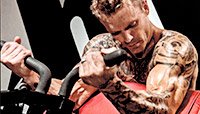
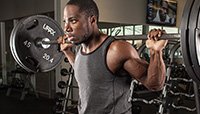




















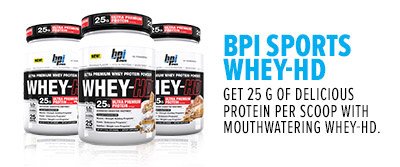



















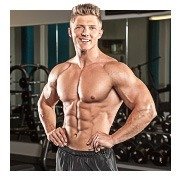

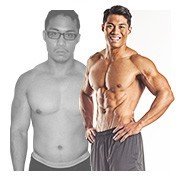

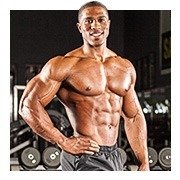
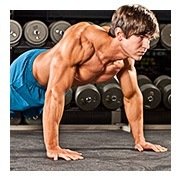
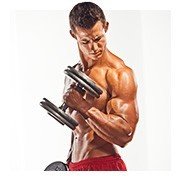
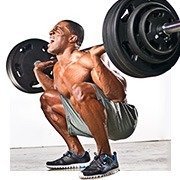
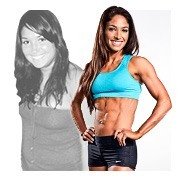


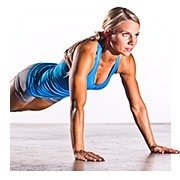
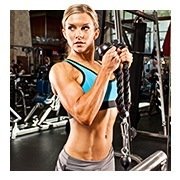
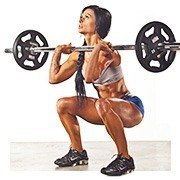














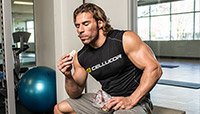















































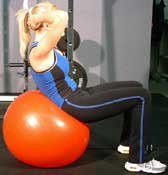
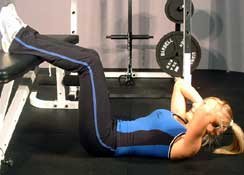
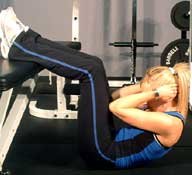
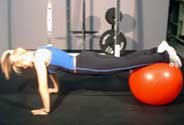
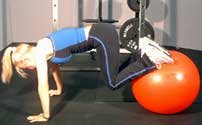
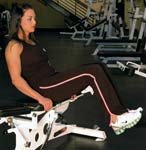
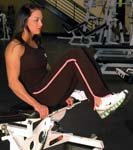



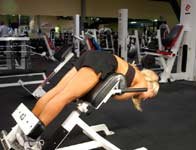
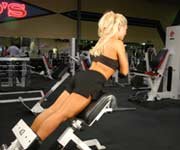
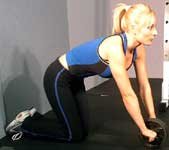
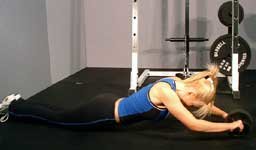
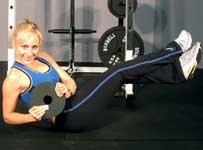
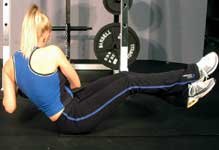
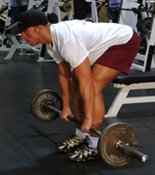






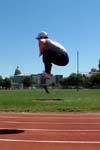






















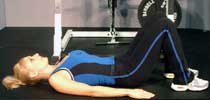
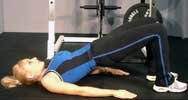




























































































































































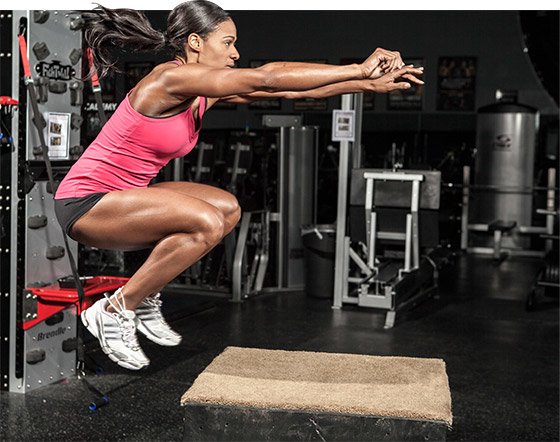

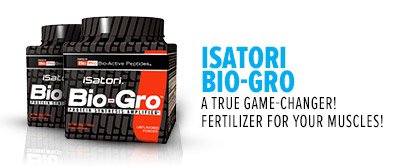


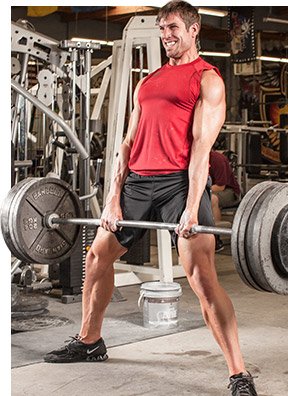
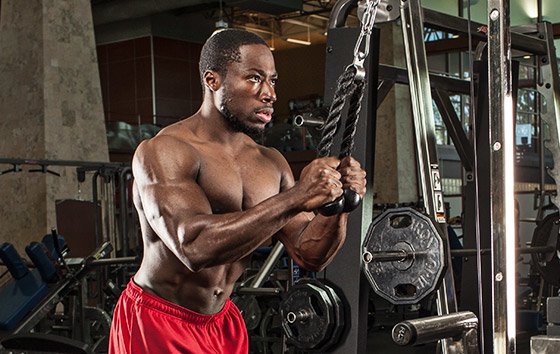



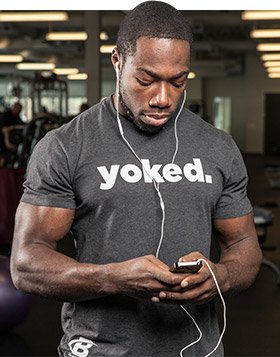
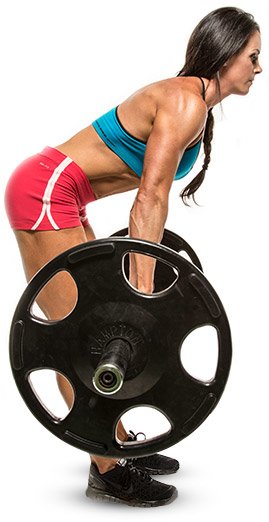
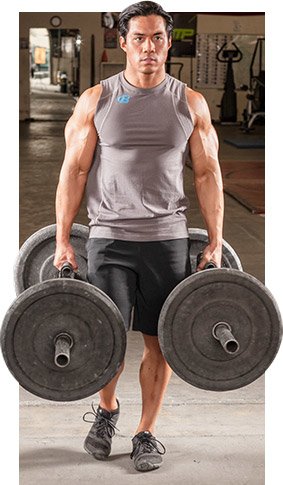

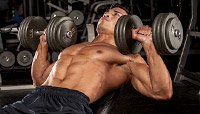
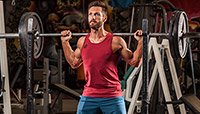













































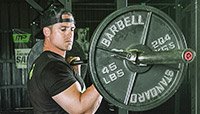
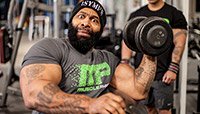
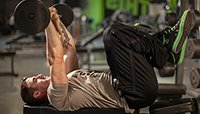
comment on this article
(5 characters minimum)